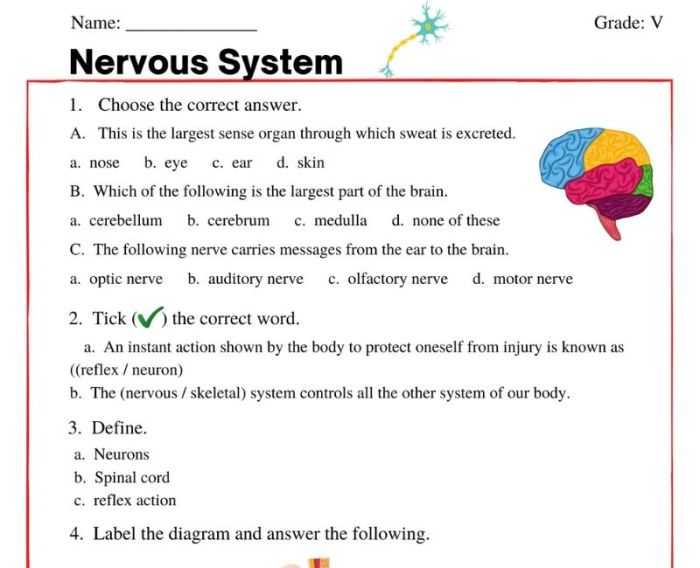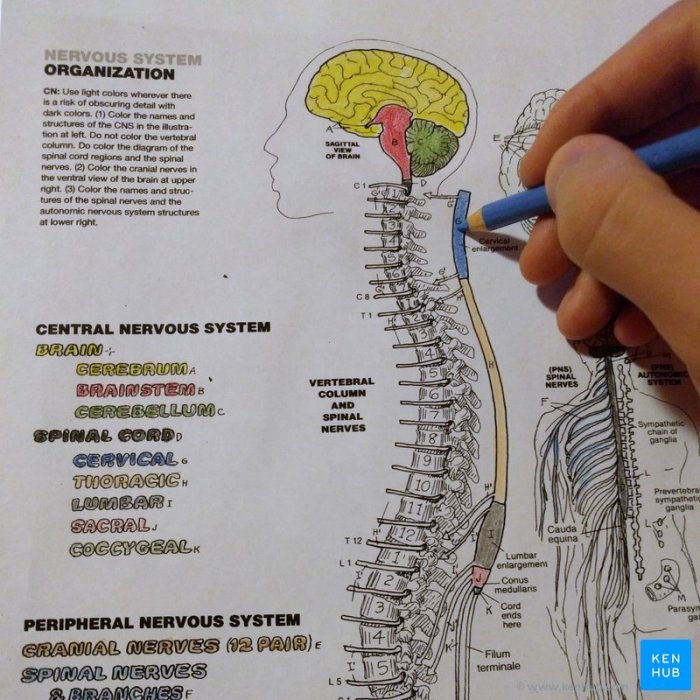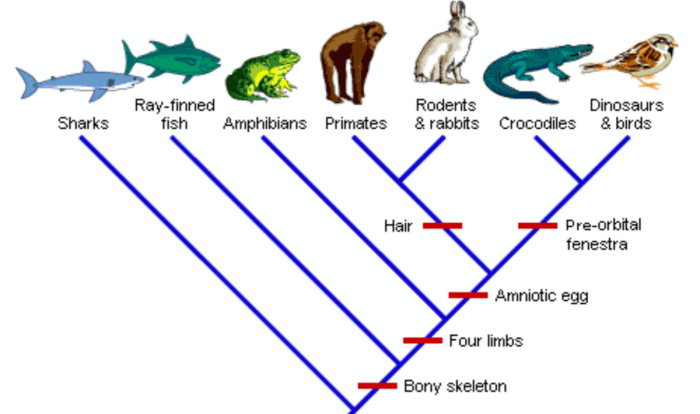Chapter 7 the nervous system coloring workbook answers – Embark on a journey through the intricate workings of the nervous system with Chapter 7: The Nervous System Coloring Workbook Answers. This comprehensive guide unveils the mysteries of the brain, spinal cord, and peripheral nerves, empowering you with a profound understanding of the body’s control center.
Delve into the anatomy and function of the central nervous system, exploring the brain’s specialized regions and the spinal cord’s vital role in communication. Discover the peripheral nervous system’s intricate network of nerves, responsible for sensory and motor functions.
1. Nervous System Overview

The nervous system is a complex network of cells, tissues, and organs that work together to control all bodily functions. It receives sensory information from the environment, processes it, and sends out motor commands to muscles and glands. The nervous system is divided into two main parts: the central nervous system (CNS) and the peripheral nervous system (PNS).
The CNS consists of the brain and spinal cord. The brain is the control center of the body, and it receives and processes information from the PNS. The spinal cord carries messages between the brain and the rest of the body.
The PNS consists of all the nerves that connect the CNS to the rest of the body. These nerves are divided into two types: sensory nerves and motor nerves. Sensory nerves carry information from the body to the CNS, while motor nerves carry commands from the CNS to the muscles and glands.
1.1. Types of Neurons
There are three main types of neurons: sensory neurons, motor neurons, and interneurons.
- Sensory neurons carry information from the body to the CNS.
- Motor neurons carry commands from the CNS to the muscles and glands.
- Interneurons connect sensory neurons to motor neurons.
2. Central Nervous System

2.1. The Brain
The brain is the control center of the body. It is responsible for receiving and processing information from the PNS, and for sending out motor commands to the muscles and glands.
The brain is divided into two hemispheres: the left hemisphere and the right hemisphere. The left hemisphere is responsible for logical thinking, language, and mathematics. The right hemisphere is responsible for creative thinking, emotions, and music.
The brain is also divided into four lobes: the frontal lobe, the parietal lobe, the temporal lobe, and the occipital lobe.
- The frontal lobe is responsible for planning, decision-making, and problem-solving.
- The parietal lobe is responsible for processing sensory information from the body.
- The temporal lobe is responsible for processing auditory information and memory.
- The occipital lobe is responsible for processing visual information.
2.2. The Spinal Cord
The spinal cord is a long, thin bundle of nerves that runs from the brain down the back. It carries messages between the brain and the rest of the body.
The spinal cord is divided into 31 segments. Each segment gives rise to a pair of spinal nerves. These nerves carry sensory information from the body to the brain and motor commands from the brain to the muscles and glands.
3. Peripheral Nervous System

The PNS consists of all the nerves that connect the CNS to the rest of the body. These nerves are divided into two types: sensory nerves and motor nerves.
Sensory nerves carry information from the body to the CNS. These nerves are responsible for our sense of touch, taste, smell, hearing, and vision.
Motor nerves carry commands from the CNS to the muscles and glands. These nerves are responsible for our ability to move our muscles and to secrete hormones.
3.1. Autonomic Nervous System
The autonomic nervous system is a part of the PNS that controls involuntary functions of the body, such as heart rate, blood pressure, and digestion.
The autonomic nervous system is divided into two branches: the sympathetic nervous system and the parasympathetic nervous system.
- The sympathetic nervous system is responsible for preparing the body for action. It increases heart rate, blood pressure, and respiration.
- The parasympathetic nervous system is responsible for calming the body down. It decreases heart rate, blood pressure, and respiration.
4. Sensory Systems

The sensory systems are responsible for receiving information from the environment and sending it to the CNS.
There are five main sensory systems:
- The visual system
- The auditory system
- The olfactory system
- The gustatory system
- The somatosensory system
4.1. The Visual System
The visual system is responsible for our sense of sight. It consists of the eyes, the optic nerves, and the visual cortex in the brain.
The eyes convert light into electrical signals that are sent to the optic nerves. The optic nerves carry these signals to the visual cortex in the brain, where they are processed and interpreted.
4.2. The Auditory System, Chapter 7 the nervous system coloring workbook answers
The auditory system is responsible for our sense of hearing. It consists of the ears, the auditory nerves, and the auditory cortex in the brain.
The ears convert sound waves into electrical signals that are sent to the auditory nerves. The auditory nerves carry these signals to the auditory cortex in the brain, where they are processed and interpreted.
Commonly Asked Questions: Chapter 7 The Nervous System Coloring Workbook Answers
What is the primary function of the nervous system?
To transmit signals and coordinate responses throughout the body, enabling communication between the brain and various organs and tissues.
How many types of neurons are there?
Three: sensory neurons, motor neurons, and interneurons.
What is the role of the autonomic nervous system?
To regulate involuntary bodily functions such as heart rate, digestion, and breathing.
